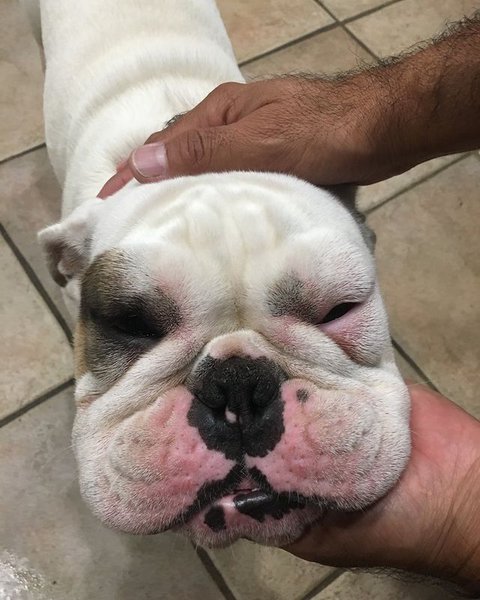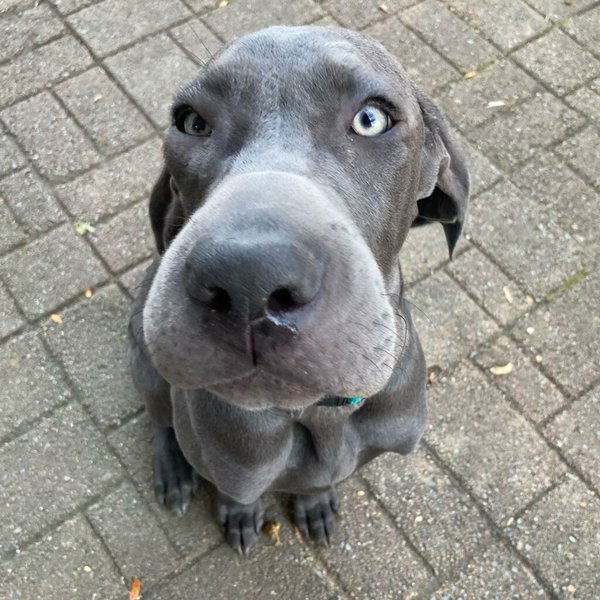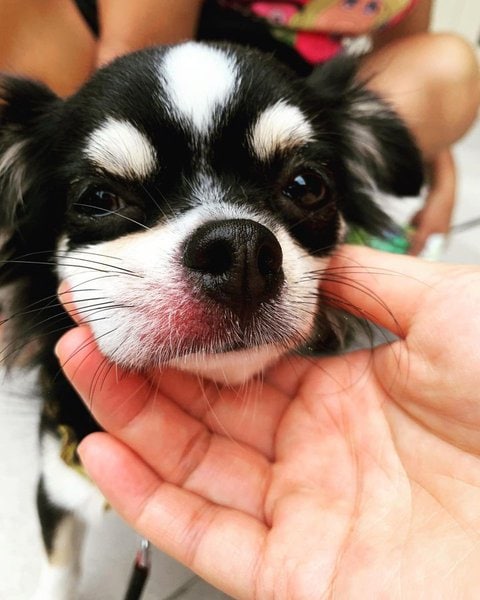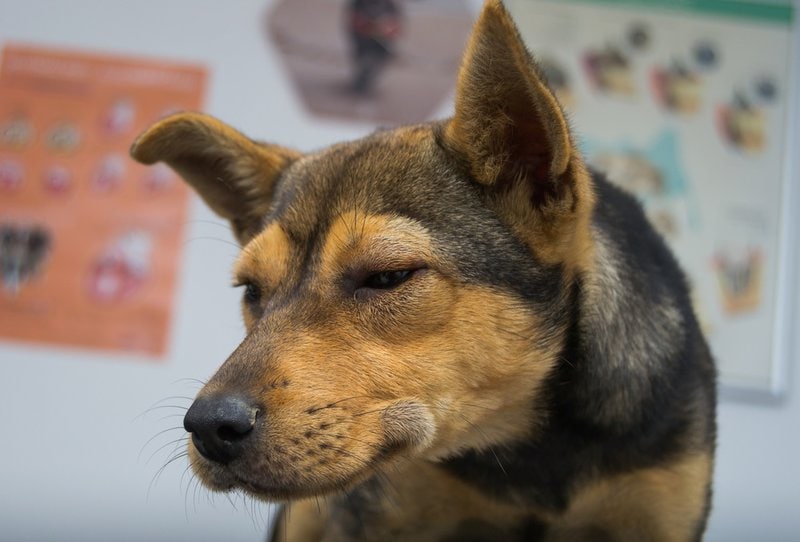Bees are important pollinators, but that doesn’t mean they can’t cause trouble for our furry companions. Can dogs be allergic to bees? And what should you do if your dog gets stung by a bee?
Bees are a common source of allergy in dogs, as they carry proteins that can cause allergic reactions. These allergies range from mild to severe and can manifest in skin rashes, itching, sneezing, coughing, and even seizures. While most bee stings don’t require medical attention, it’s essential to immediately seek veterinary help for dogs being stung.
In this blog post, we’ll discuss whether dogs can be allergic to bees, the common signs and symptoms of bee stings, and what you should do if your dog gets stung by a bee.
How Do I Know If My Dog Is Allergic To Bees?

Your furry friend will exhibit sure signs if they’re allergic to bees. You will notice your pup scratching or chewing on its feet and legs more than usual. It could be due to an allergic reaction and other skin conditions such as fleas or mites.
If you’re unsure that your dog has an allergic reaction, take them to the vet for a thorough examination and diagnosis. The vet may suggest skin testing to determine if your dog is allergic to bee stings. Skin testing will involve injecting small amounts of bee venom into the skin and observing the area for signs of an allergic response.
How Long After Bee Sting Does Allergic Reaction Occur In Dogs?
When it comes to bee stings and allergic reactions in dogs, the time until a reaction occurs can vary greatly.
Most often, the reaction can be seen within 20 minutes of being stung. However, some more severe reactions may take several hours before any signs are noticed.
How Long Should I Monitor My Dog After A Bee Sting?
It is important to monitor your dog for at least 12 hours after a bee sting. If the symptoms appear, then you can proceed with medication. In some cases, you must observe them for 24 hours, depending on their reaction and the severity of the sting.
How Do Dogs Act After Bee Sting?

Bee stings can be very painful and uncomfortable for dogs, causing irritation and inflammation. After a bee sting, a dog may display various signs of distress, such as yelping, licking, scratching at the affected area, or general agitation or restlessness.
Removing the stinger with tweezers is possible if the sting is visible. In addition to applying an ice pack to reduce swelling, you can check for secondary symptoms such as hives or pale gums, which could indicate an allergic reaction.
Can Dogs Go Into Anaphylactic Shock From Bee Sting?
Yes, dogs can go into anaphylactic shock from bee stings.
You should be careful and watch your dog closely if they have been stung by a bee. Anaphylactic shock is a severe and potentially deadly allergic reaction after exposure to specific allergens, such as bees or certain foods.
Symptoms of anaphylaxis in dogs include sudden collapse, vomiting, diarrhea, swelling of the face and body, difficulty breathing, pale gums, and signs of shock.
What To Do If Your Dog Gets Stung By A Bee?
Getting stung by a bee is painful for your pup. It is hard to tell sometimes when your furry friend has been hurt, especially if they are trying to hide the pain. It’s essential to look for any discomfort or distress that could indicate a bee sting.
Here are some steps to take if your dog has been stung by a bee.
- Stay calm
- Move away from the area where it happens
- Assess the area
- Determine the location of the sting
- Look for signs of an allergic reaction
- See a vet
How Do You Treat A Bee Sting On A Dog At Home?

If your dog is not having a severe reaction, there are some steps you can take at home to help relieve its pain.
Start by gently wiping away any visible stingers and venom sacs with a damp cloth.
Next, apply a cold compress or ice pack to the affected area for 15 minutes. It will help reduce swelling and ease your pup’s pain.
Keep an eye on your dog for any signs and symptoms of infection. If they worsen or do not improve after a few days, it’s best to take them to the vet for further treatment.
Should I Give My Dog Benadryl For A Bee Sting?
Yes, you can give Benadryl to your dog if it gets stung by a bee. However, it is important to consult your veterinarian to determine the correct dosage for your pet’s weight and size before doing so. Benadryl is a safe and effective medication for treating allergic reactions in dogs caused by bee stings.
Depending on the dog’s size and age, it can be administered orally or topically. When using Benadryl to treat an allergic reaction, it’s important to remember that only small doses are necessary, as higher dosages can cause side effects.
Additionally, the medication should be given only under the guidance of a veterinarian or veterinary emergency clinic.
Should I Take My Dog To The Vet If It Got Stung By A Bee?
Yes! Bee stings can become infected if not properly attended to. It can lead to swelling, redness, and even pus. The vet will be able to determine if any of these symptoms are present and provide the necessary medications or treatments to ensure that your pup is healthy.
Your vet may prescribe antihistamines to help reduce the symptoms of an allergic reaction and antibiotics to prevent secondary infections from developing. Once your pet is stable, and the symptoms are under control, it is essential to watch for any changes in their behavior.
Contact your vet immediately for further evaluation and treatment if you notice these signs. Always bring a sample of the stinger with you to the vet if you can find it.
What If I Can’t Find The Stinger On My Dog?

If you cannot find the stinger on your dog, it is important to watch for signs of an allergic reaction or other reactions that may indicate a sting. Some common symptoms of a bee sting include:
- Localized swelling
- Redness at the site of the sting
- Itchiness
- Hives
- Difficulty breathing
If your dog experiences any of these symptoms, contact your veterinarian immediately.
What Are The Side Effects Of A Dog Getting Stung By A Bee?
Side effects of a dog getting stung by a bee can be serious, depending on the severity and number of stings. Dogs can get side effects from being stung by a bee that ranges from mild to severe. Monitor your pet closely after a bee sting to identify the side effects.
If your pup’s condition appears to be getting worse, if there is excessive drooling or vomiting, or if your pet seems to be having difficulty breathing, you should seek immediate medical attention for your dog.
The most common effects include the following.
Swelling
The most common side effect of a dog getting stung by a bee is pain and swelling at the site of the sting. This can last up to 24 hours, when your pet may experience discomfort, itching, and redness. Depending on the dog’s size and length of exposure to the bee’s venom, the swelling and pain can range from mild to severe.
Fever
Most pups are likely to develop a fever. This can usually be combated with the help of anti-inflammatory medication or topical corticosteroids and can be monitored closely by your vet.
Increased Heart Rate
Your furry friend can experience an increased heart rate. It is due to the body’s reaction to the bee’s venom and can signify that your pup is allergic.
Restlessness

Restlessness also occurs after being stung by a bee due to the pain or discomfort they feel. Contact your vet to discuss treatment options if your pup exhibits this symptom.
Difficulty Breathing
In some cases, dogs can experience difficulty breathing after being stung by a bee. This can indicate a more serious allergic reaction and should be addressed promptly.
Pain & Itching
Your pup can experience pain or itching at the sting site, which can often be relieved with over-the-counter treatments, such as Benadryl or Claritin.
Hives
Hives are raised, and red bumps on the skin can cause itching and may indicate that your pup has an allergic reaction. If you notice hives, contact your vet immediately, as they can be a sign of anaphylaxis.
Nausea & Vomiting
Sometimes, your pup can get nausea and vomiting after being stung. This can be a sign of an allergic reaction, so it is important to contact your vet as soon as possible if this symptom occurs.
Diarrhea
Diarrhea can also occur in some dogs after being stung by a bee. This is because a bee’s venom contains certain proteins and enzymes that can cause an allergic reaction in dogs, resulting in an upset stomach and digestive issues. If your pup is experiencing diarrhea, it could indicate an allergic reaction.
Anaphylaxis
In some rare cases, dogs can suffer from anaphylactic shock, which can be fatal if untreated. Symptoms of anaphylaxis include difficulty breathing, swelling of the face or throat, vomiting, and diarrhea. If you suspect your pup is experiencing anaphylaxis, contact your vet immediately, as they need to be treated with epinephrine.
Do All Dogs React To Bee Stings?

No, not all dogs react to bee stings. While some canines experience pain, swelling, and other uncomfortable reactions when stung by a bee, others may not even realize that they have been stung.
However, some dog breeds are prone to getting allergic to bee stings, including the following.
- Bull Terriers
- Boxers
- Staffordshire Terriers
- Chihuahuas
Depending on the breed and individual dog’s sensitivity level, some may respond more severely than others, even if they are the same breed. Therefore, most pups will be safe from a bee sting reaction, while some may experience mild to moderate symptoms.
Additionally, not all breeds are equally at risk of being stung by bees; smaller breeds tend to be more vulnerable due to their size and proximity to the ground, where bees are more likely to be found.





